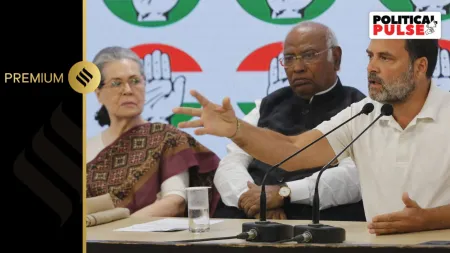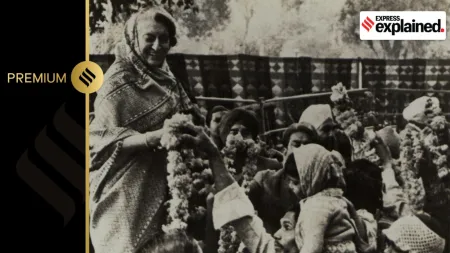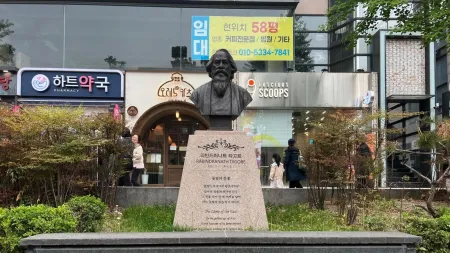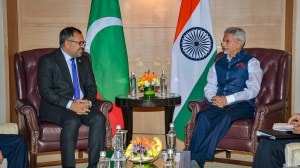- India
- International
Rabindranath Tagore’s letters to Victoria Ocampo: What lay behind their higher love?
Poet laureate Rabindranath Tagore’s letters to Argentine critic and writer Victoria Ocampo were promises of an infinite love, of holding minds than hands
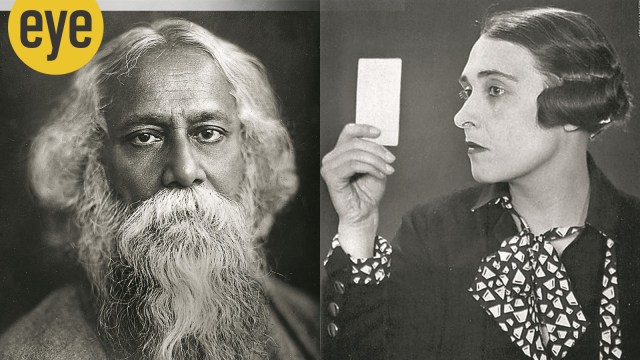 Rabindranath Tagore (Credit: Britannica) and Victoria Ocampo (Credit: Wikimedia Commons) shared a love that crossed continents and years.
Rabindranath Tagore (Credit: Britannica) and Victoria Ocampo (Credit: Wikimedia Commons) shared a love that crossed continents and years.“Dear Vijaya, often (there) comes to my mind the picture of that riverside home and the regret that in my absent-minded foolishness, I failed to fully accept the precious gift offered to me. However, the time favoured by destiny has passed and it will never return.”
Vijaya was none other than the woman poet laureate Rabindranath Tagore rechristened — Argentine litterateur, critic and writer Victoria Ocampo. He wrote this letter to her a year before his death, recalling the days when he fell ill and recovered at her country home in Argentina in 1924. Tagore had become a global citizen after he wrote Gitanjali (1910) and his works had a profound impact on the intellectual movement in Latin America.
Ocampo was one of his most ardent fans, who went on to become his emotional equivalent and sounding board, both drawing sustenance from each other and sharing their imagination in the most platonic and soulful way. Though they met each other very briefly in the 1920s, each was to nurture their cross-continental ties through a series of letters and gifts that lasted till Tagore’s death in 1941. Many say that it was Tagore’s fullest spiritual relationship. It was also about awakening the deepest emotions in one another.
“You can call it Tagore’s most complete relationship. Ocampo worshipped him like a guru and wanted to be indoctrinated in his philosophy based on Vedanta and Upanishads, one where the self and ego merge with the higher consciousness and the universe. She was seeking God during an emotional trough in her life and found Tagore through translated works without knowing she would meet him. Another happy accident in this relationship is that she got to read superior translations of the Gitanjali, in French, which were closest to Tagore’s mind. She would even help him with translations of some of his stanzas,” says SP Ganguly, Tagore scholar and former Jawaharlal Nehru University professor.
Theirs was perhaps a meeting ordained. When Tagore was visiting Buenos Aires with his British friend, Lord Elmhirst, he fell ill. Ocampo offered her villa at Miralrio on River Plate to help him recuperate. There, by the river and under the shadow of a tree, they talked. At the time, Ocampo was a 34-year-old emerging writer and Tagore was 63.

She not only inspired the ascetic poet to swing back to romanticism with his Purabi series of poems, where she is referred to as Vijaya (victory), bringing out his emotions and ardour, but also encouraged him to exhibit his paintings in Paris. They discussed world literature and Baudelaire. She sponsored his exhibition of paintings and sketches in Paris, in 1930. “Tagore was taken in by her independent spirit. He had been influenced by many women in his life but he never encouraged female attention, even maintaining a distance, and acknowledging them in a rare letter of not more than three or four lines. With Ocampo, he not only wrote many letters, but revealed his inner mind and frailties. In his advancing years, he had, perhaps, come close to finding an equivalent,” says Ganguly. Ocampo, on her part, always gave Tagore his space, waiting outside his door for hours to meet him.
Ocampo said that there was a lot unsaid in their relationship. In Tagore’s letters, you do find that he missed that companionship: “I have often said to you that I am not free to give up my freedom… for this freedom is claimed by my Master for his own service… I tell you all this because I know you love me…” What he meant is that he had a higher calling, which required him to be free of earthly attachments. He did invite her to Shantiniketan, and in a letter wrote, “The heart longs to own it back, it was lost forever.” She represented a kind of assertiveness that Tagore never had. She once tore down a ship’s door to shove in the chair that he liked to sit in. But she never visited India. When asked to define her, Tagore simply said, ‘Bhalobasha’ (love).
May 10: Latest News
- 01
- 02
- 03
- 04
- 05


